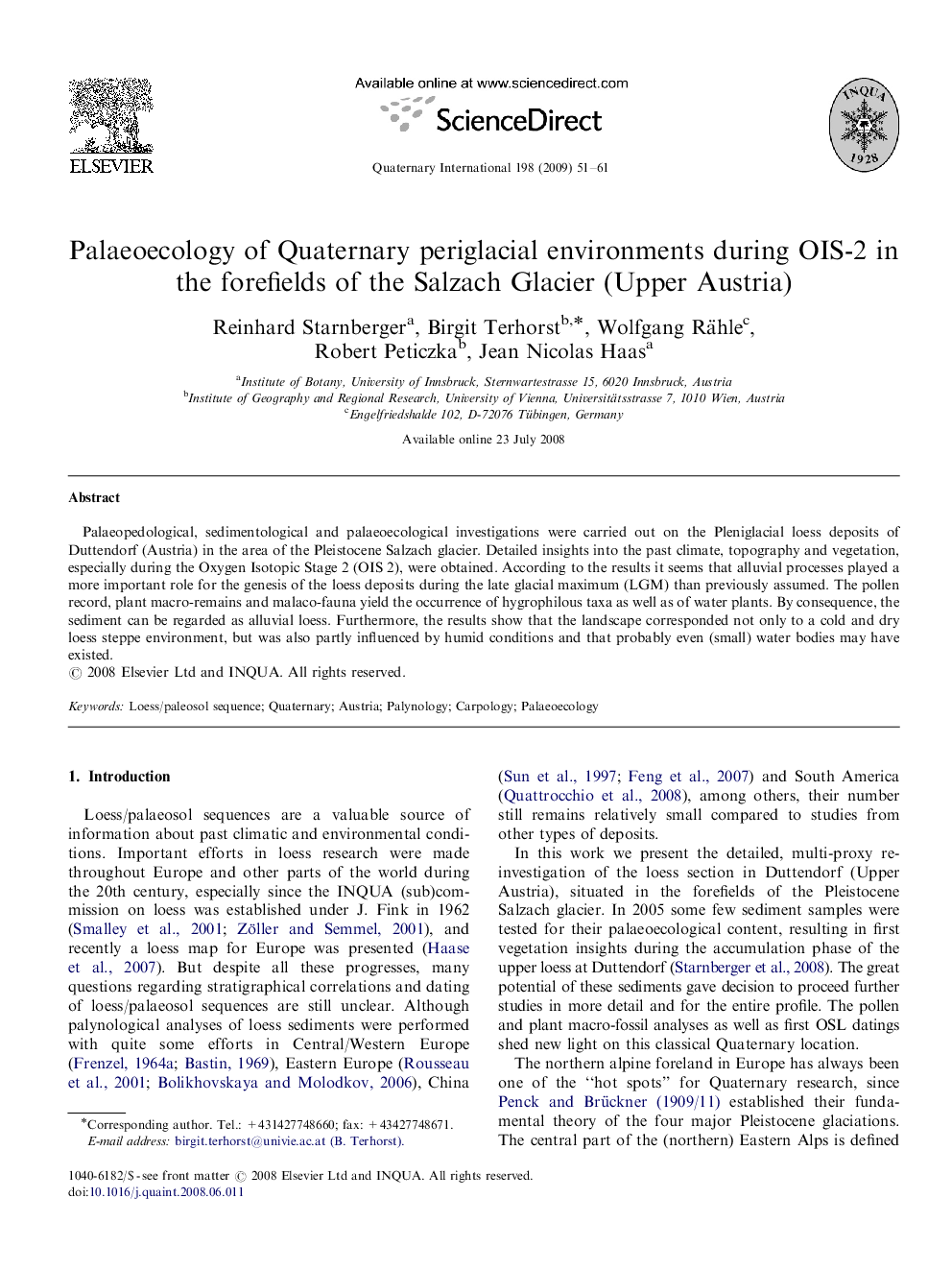| Article ID | Journal | Published Year | Pages | File Type |
|---|---|---|---|---|
| 1044226 | Quaternary International | 2009 | 11 Pages |
Palaeopedological, sedimentological and palaeoecological investigations were carried out on the Pleniglacial loess deposits of Duttendorf (Austria) in the area of the Pleistocene Salzach glacier. Detailed insights into the past climate, topography and vegetation, especially during the Oxygen Isotopic Stage 2 (OIS 2), were obtained. According to the results it seems that alluvial processes played a more important role for the genesis of the loess deposits during the late glacial maximum (LGM) than previously assumed. The pollen record, plant macro-remains and malaco-fauna yield the occurrence of hygrophilous taxa as well as of water plants. By consequence, the sediment can be regarded as alluvial loess. Furthermore, the results show that the landscape corresponded not only to a cold and dry loess steppe environment, but was also partly influenced by humid conditions and that probably even (small) water bodies may have existed.
